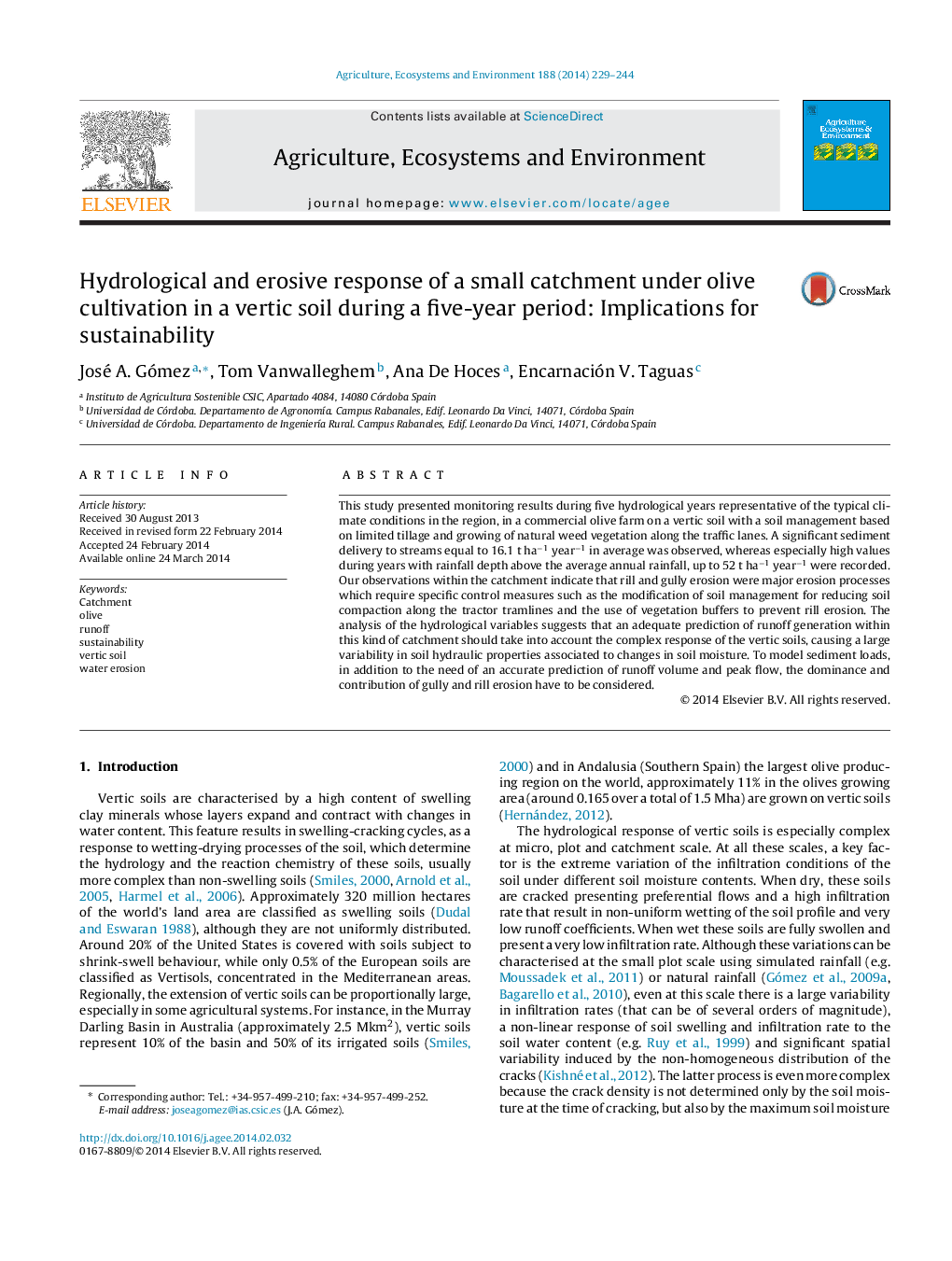| Article ID | Journal | Published Year | Pages | File Type |
|---|---|---|---|---|
| 8487883 | Agriculture, Ecosystems & Environment | 2014 | 16 Pages |
Abstract
This study presented monitoring results during five hydrological years representative of the typical climate conditions in the region, in a commercial olive farm on a vertic soil with a soil management based on limited tillage and growing of natural weed vegetation along the traffic lanes. A significant sediment delivery to streams equal to 16.1 t haâ1 yearâ1 in average was observed, whereas especially high values during years with rainfall depth above the average annual rainfall, up to 52 t haâ1 yearâ1 were recorded. Our observations within the catchment indicate that rill and gully erosion were major erosion processes which require specific control measures such as the modification of soil management for reducing soil compaction along the tractor tramlines and the use of vegetation buffers to prevent rill erosion. The analysis of the hydrological variables suggests that an adequate prediction of runoff generation within this kind of catchment should take into account the complex response of the vertic soils, causing a large variability in soil hydraulic properties associated to changes in soil moisture. To model sediment loads, in addition to the need of an accurate prediction of runoff volume and peak flow, the dominance and contribution of gully and rill erosion have to be considered.
Related Topics
Life Sciences
Agricultural and Biological Sciences
Agronomy and Crop Science
Authors
José A. Gómez, Tom Vanwalleghem, Ana De Hoces, Encarnación V. Taguas,
